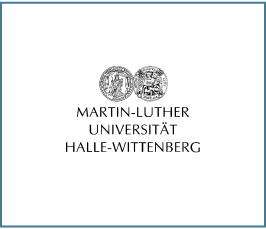Low energy consumption spintronics and nonlinear optics in multiferroic heterostructures
Colloquium
- Datum: 02.07.2015
- Uhrzeit: 17:15
- Vortragende(r): Dr. Morgan Trassin
- ETH Zurich
- Ort: Leibniz-Institut für Agrarentwicklung in Transformationsökonomien (IAMO), Theodor-Lieser-Straße 2, 06120 Halle (Saale)
- Raum: Hörsaal
- Gastgeber: Martin-Luther-Universität Halle-Wittenberg

The evidence of the electric field
control on the antiferromagnetic ordering in multiferroic bismuth
ferrite (BiFeO3 - BFO)[1] increased interest in low energy consumption
logic and memory devices. However, to exploit such functionality for
devices it is essential to attain eterministic control of ferromagnetism
at the single domain scale. In a recent demonstration of room
temperature electric field induced magnetization reversal [2], a
ferromagnet/multiferroic heterostructure has been designed based on the
combination of magnetoelectric coupling in BFO and exchange coupling
between magnetic materials [3]. Understanding the underlying BFO domain
architecture is a key parameter towards robust and reliable
magnetization rotations. The most recent evidences of electrical control
of magnetism in this system will be presented. I will also show that
second harmonic generation (SHG), can further improve the
heterostructures investigation and detect the distribution of
ferroelectric domains in BFO thin films, non-invasively and unimpeded by
transport properties. We use epitaxial strain for engineering different
types of BFO domain patterns that are characterized by SHG, showing a
unique relation between the domain distribution and the film symmetry.
We then manipulate the BFO film by voltage poling and demonstrate the
sensitivity of the SHG process to this manipulation. The concept applied
to BFO is transferable to other multiferroics compounds thus indicating
the general feasibility of SHG as a characterization technique for
heterostructures in which buried ferroelectricity plays a key role in
the emergence of magnetoelectric coupling.
[1] T. Zhao et al., Nat. Mater. 5, 823 (2006)
[2] J. T Heron et al., Nature 516, 371 (2014)
[3] M. Trassin et al., Phys. Rev. B 87, 134426 (2013)